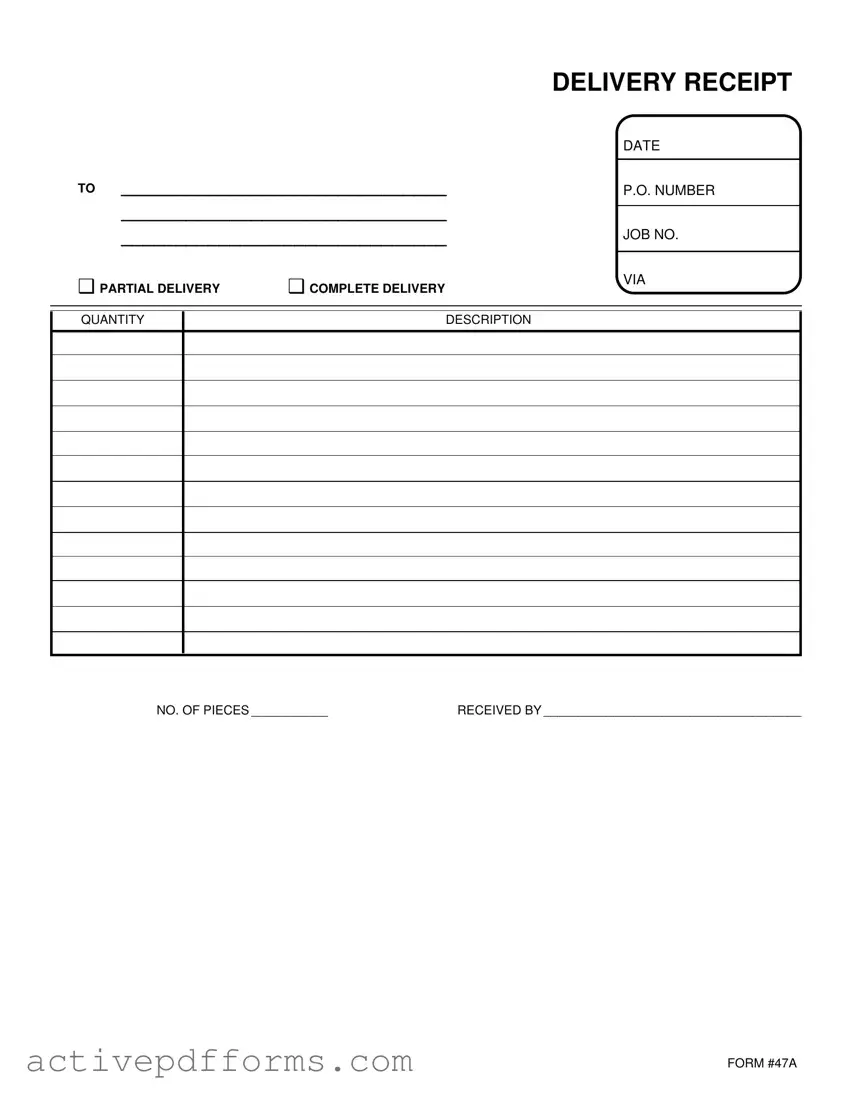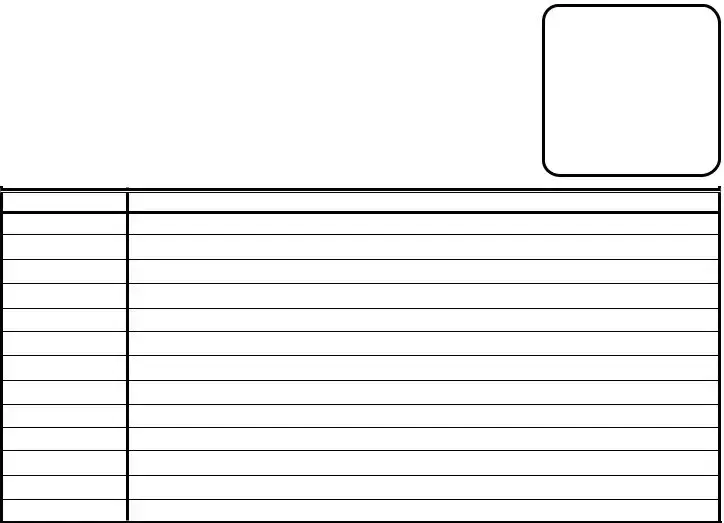Free Delivery Receipt PDF Template
A Delivery Receipt form is a document that officially records the delivery and receipt of goods. It includes critical details such as the date, recipient's name, purchase order number, job number, delivery type (partial or complete), method of delivery, quantity, item descriptions, number of pieces received, and the signature of the person receiving the goods. This form, identified as FORM #47A, serves as proof of delivery and is essential for both the sender and receiver for tracking and verification purposes.
Edit Delivery Receipt Now

